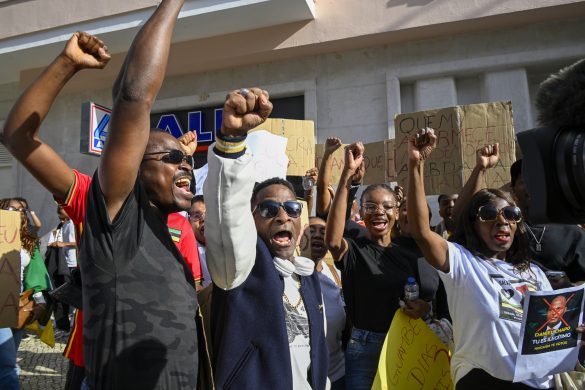Læger uden Grænser (MSF) har riven ude mod det internationale samfunds humanitære indsats, der betegnes som langsommelig og alt for ofte ineffektiv – og så får NGOer i u-landene med værdifuldt lokalkendskab stort set ingen af de mange humanitære millioner.
JOHANNESBURG, 15 July 2014 (IRIN): Recently, international medical humanitarian organization Médecins Sans Frontières (MSF) released a hard-hitting report „Where is everyone?‟ outlining a number of severe shortcomings in the international aid community’s response to humanitarian crises – se mere og hele rapporten på http://www.msf.org/article/msf-report-where-everyone
Many of the issues raised in the report are uncomfortably familiar to anyone working at the frontlines of emergency responses:
* funding systems are too slow and inflexible, negatively impacting response times;
* small, local NGOs that are often best placed to respond to emergencies are excluded from the predominantly Western-based, UN-centred humanitarian system; and
* emergency response capacity is not the priority it should be in a humanitarian system that has grown to take on many other functions.
„Headline grabbing‟ critique
Bertrand Taith, a cultural historian of humanitarian aid and director of the Humanitarian and Conflict Response Institute at the University of Manchester, has suggested that the report is short on evidence.
He questioned whether MSF’s “headline grabbing” critique of well-worn concerns was the best approach “in an era when austerity (sparsommelighed) is deployed throughout the world as the excuse to restrict aid budgets”.
However, Ed Schenkenberg, chief executive of DARA, an NGO that evaluates the efficacy of humanitarian responses, countered that while the methodology behind MSF’s report could have been stronger, “overall, they are asking the right questions….‟
“Over the last 10 years, we have seen a huge increase in the number of actors and a huge effort to professionalize the sector, and when you look at those developments, I think it is very valid to ask what the outcomes are for people affected by humanitarian crises,” he told IRIN.
So what are the key issues that the report raises and how has the aid community responded to them? IRIN takes a look.
Ever larger budgets have not led to more effective responses
The report begins with the assertion that “the international humanitarian aid system has more means and resources at its disposal… than ever before”.
It later notes that insufficiency of financing was not identified as a major constraint in any of the three case studies of emergency responses reviewed for the report (in South Sudan, DR Congo and Jordan), all of which were described as having major failings.
Greg Barrow, director of the UN World Food Programme’s London office, responded to IRIN that while the humanitarian community might have more resources at its disposal, “the scale, complexity and cost of responding to humanitarian emergencies is undoubtedly increasing”.
Simultaneous, large-scale displacements in countries including Syria, Iraq, Central African Republic and South Sudan, are putting an unprecedented strain on the international humanitarian system and, according to Jens Lærke, a spokesperson with the UN Office for the Coordination of Humanitarian Affairs (OCHA), “lack of funds continues to constrain humanitarian operations around the world”.
Wendy Fenton of the Overseas Development Institute’s Humanitarian Policy Group pointed out that while aid agencies may face funding constraints, “agencies have choices about how they operate and what they prioritize.”
Local NGOs as stepchildren overshadowed by giants of the West
MSF’s main contention is that they often fail to prioritize emergency response capacity which the authors describe as the humanitarian system’s “core business”.
Augustin Augier, head of ALIMA, a French NGO that focuses on partnering with local actors to provide medical care in emergencies, agreed that emergency responses are not being sufficiently prioritized but blamed the overall humanitarian system rather than individual agencies.
“The system does not provide enough incentive for local NGOs to develop strong humanitarian experience,” he told IRIN, adding:
“They all want to do development because you can get longer contracts that allow you to invest in infrastructure. They all say that from a business perspective, the incentives in the humanitarian system are not good enough for emergency response.”
From 2009 to 2013, local and national NGOs received 1.6 percent of the total aid given to NGOs as reported through OCHA’s Financial Tracking System.
This represented 0.2 percent of the total international humanitarian response over the period, according to Development Initiatives research.
Aid agencies are risk-averse
Læs videre på
http://www.irinnews.org/report/100349/how-flawed-are-current-aid-responses














